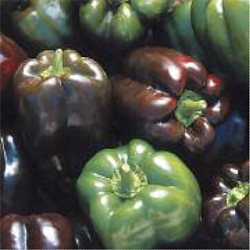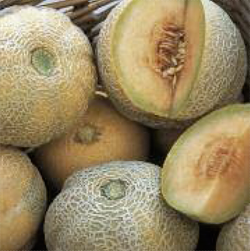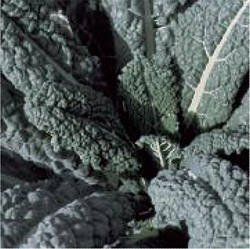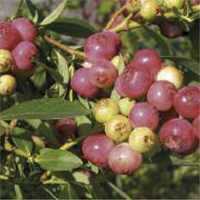edible garden
DIVERSE PICKS
Exciting edibles to plant this spring.
WRITTEN BY SUSAN HENDERSON
PHOTOS COURTESY OF SEEDS SAVERS EXCHANGE
Every garden has a purpose. It may be as simple as a spot of spring color or as ambitious as culinary self-sufficiency. Gardening can and should be a source of pleasure, relaxation, and healthy physical activity, not a grinding and relentless task adding pressure to life. Placing some interesting new plants onto your garden wish list and incorporating edibles into your flowerbeds will invigorate an old garden or provide inspiration to start something new. Here are a few varieties that might be fun to try this season. Some may be relatively new to you, but others such as the Black Krim tomatoes are proven heirloom varieties that perform well in our Northern Nevada climate.
PINK LEMONADE BLUEBERRY
First introduced in 2009, the first-ever pink blueberry, this is a medium-sized, glossy, bright pink fruit. This plant also provides year-round beauty and interest. Pinkish-white, bell-shaped blooms appear in spring. Summer brings pale green fruit that quickly turns deep pink for harvest. Autumn leaves are bright orange and red. Fruit is deliciously sweet and mild with nice firm texture. Several studies tout the many health benefits of blueberries, and they have the highest sources of anti-oxidants of all fresh fruits. They prefer full sun and an extremely acidic soil so they can be a challenge for some, but with help from the right soil amendments growing them is achievable in our area. This plant may be a little hard to find though. As a brand-new introduction, it is in high demand. This particular variety is a woody shrub that ripens mid-late to late-season.

CHOCOLATE BEAUTY BELL PEPPER
This one is a must for the gourmet edible garden. It is not only excellent in salads, but also beautiful when sautéed with green and red peppers, or as a stuffed pepper. This shiny green bell pepper has a sweet flavor when green, but don’t be tempted to pick it. Let it ripen to a gorgeous chocolate brown for full flavor. Plant in average garden soil with sufficient organic matter, or use in a container garden. Growing just 3 feet, it is the perfect fit for the center of a wine barrel. Surround it with herbs and lettuce and you have an ideal mini-edible garden. Peppers use quite a bit of water but prefer to be watered deeply and not too often. Blossom pruning will improve fruit size. Try this one if you are looking for a productive addition to your kitchen garden this year. (70 – 75 days)

MINNESOTA MIDGET MELON
Here in Northern Nevada where nights are cool and growing seasons are unpredictable this melon that matures in only 75 days is an excellent choice. The plant produces good yields of small 1½-pound melons, the perfect size for two people to enjoy in one serving. The melons are 4 – 6 inches across with golden yellow flesh and high sugar content. The plant has small, 3-foot vines and produces up to 18 fruits per plant. These compact plants are ideal for small gardens or containers. (75 days)

BLACK KRIM TOMATO
This tomato is originally from the Isle of Krim on the Black Sea in the former Soviet Union. Totally extraordinary and great tasting, this once rare variety is now available from most garden centers or seed catalogs. A beautiful and outstanding heirloom, the plants yield 3 to 4 inches slightly flattened dark-red, almost chocolate colored beefsteak tomatoes with deep green shoulders. It’s low in acid and has a fantastic, intense, slightly salty taste, perfect for those on a low-salt diet. It is similar to, but larger than, Cherokee Purple, another fun heirloom to try. An indeterminate variety (meaning it will produce all summer rather than just one large crop), it is also suitable for a container/patio garden. (75 days)

TUSCAN BLACK KALE
(aka DINOSAUR, NERO di TOSCANA)
It is thought by many to be the tastiest of the true kales, and due to its dark green color, likely the most nutritious. This variety comes from the Tuscan hills of Italy, where it can be found in nearly every garden. The plants, with their long blistered dark green leaves, are so beautiful they make an excellent addition to your edible garden or as a backdrop to your perennial flower beds. The leaves can be harvested a few at a time throughout the growing season, or all at once at the end of the season. Because it is so fast growing, make sure to plant a crop in early spring, and then again in the fall because like most kales, it becomes sweeter after frost. (55 days)
Don’t forget to contact your local garden center or co-operative extension office for cultural requirements in your area. If you don’t have luck finding the plants themselves, you can start the seeds indoors in early spring, and transplant them into the garden in April if you protect them. A great way to keep them safe from chill is by using an inexpensive mini-greenhouse system called Wall-O-Water.
Susan Henderson owns Flower Tree Nursery and Red Zinnia in Fallon. For details, visit Flowertreenursery.com.


